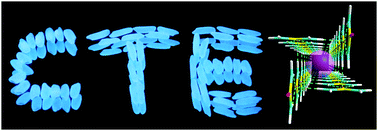Nonconventional luminophores devoid of remarkable conjugates have attracted considerable attention due to their unique luminescence behaviors, updated luminescence mechanism of organics and promising applications in optoelectronic, biological and medical fields. Unlike classic luminogens consisting of molecular segments with greatly extended electron delocalization, these unorthodox luminophores generally possess nonconjugated structures based on subgroups such as ether (–O–), hydroxyl (–OH), halogens, carbonyl (C![[double bond, length as m-dash]](https://www.rsc.org/images/entities/char_e001.gif) O), carboxyl (–COOH), cyano (C
O), carboxyl (–COOH), cyano (C![[triple bond, length as m-dash]](https://www.rsc.org/images/entities/char_e002.gif) N), thioether (–S–), sulfoxide (S
N), thioether (–S–), sulfoxide (S![[double bond, length as m-dash]](https://www.rsc.org/images/entities/char_e001.gif) O), sulfone (O
O), sulfone (O![[double bond, length as m-dash]](https://www.rsc.org/images/entities/char_e001.gif) S
S![[double bond, length as m-dash]](https://www.rsc.org/images/entities/char_e001.gif) O), phosphate, and aliphatic amine, as well as their grouped functionalities like amide, imide, anhydride and ureido. They can exhibit intriguing intrinsic luminescence, generally featuring concentration-enhanced emission, aggregation-induced emission, excitation-dependent luminescence and prevailing phosphorescence. Herein, we review the recent progress in exploring these nonconventional luminophores and discuss the current challenges and future perspectives. Notably, different mechanisms are reviewed and the clustering-triggered emission (CTE) mechanism is highlighted, which emphasizes the clustering of the above mentioned electron rich moieties and consequent electron delocalization along with conformation rigidification. The CTE mechanism seems widely applicable for diversified natural, synthetic and supramolecular systems.
O), phosphate, and aliphatic amine, as well as their grouped functionalities like amide, imide, anhydride and ureido. They can exhibit intriguing intrinsic luminescence, generally featuring concentration-enhanced emission, aggregation-induced emission, excitation-dependent luminescence and prevailing phosphorescence. Herein, we review the recent progress in exploring these nonconventional luminophores and discuss the current challenges and future perspectives. Notably, different mechanisms are reviewed and the clustering-triggered emission (CTE) mechanism is highlighted, which emphasizes the clustering of the above mentioned electron rich moieties and consequent electron delocalization along with conformation rigidification. The CTE mechanism seems widely applicable for diversified natural, synthetic and supramolecular systems.
